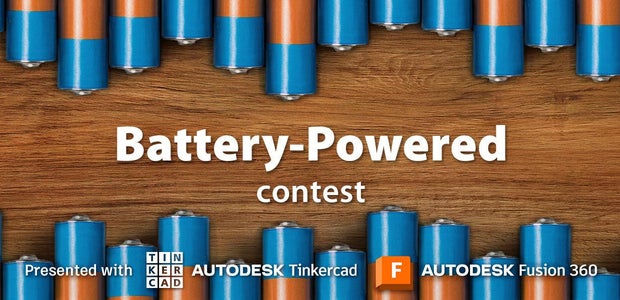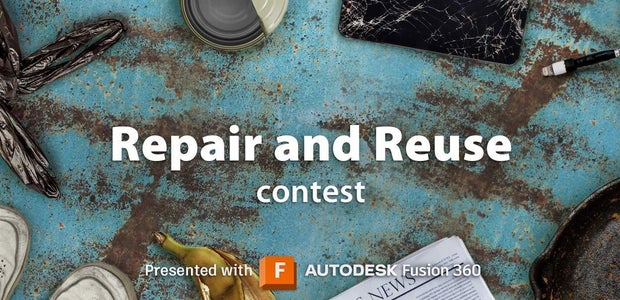Introduction: WOODEN LED FLOOD LIGHT
This is a pretty simple project. After you finish it you can use it for many of your lighting needs such as a night-light, for general ambiance, or for whatever you can think of. The project is built to be run off of a USB power supply (5v) so it is also pretty versatile in terms of power usage; you can switch the USB cable for a battery pack (3 x 1.5v) or a wall adapter (DC 4.5-6v) that you might have laying around from an old cell phone.
The design is made to fit into a corner ("Nobody puts Baby in a corner") and project light into the rest of the room.
You'll need the following materials and tools:
- Some scrap wood, approximately 6" x 2" x 2" (or 190mm x 120mm x 60mm)
- 30 1.5v LEDs (red or green)
- 1 toggle switch
- 1 10 ohm resistor
- Two different colors of insulated wire, about 3 feet (1m) each
- 5/8" or ~15mm long screws
- A table saw
- A mitre saw or a hand saw
- a drill + drill bits
- A soldering iron + solder
- A hot glue gun + glue sticks
- A solderless breadboard
*The total build time should be less than 8 hours.
Step 1: Mill Your Wood
The first step is to cut your wood down to small slices.which you can use a bandsaw for, which is the safest method, or a table saw (2nd safest) or a electric mitre saw (not safe at all). Whichever you choose, use scrap wood to keep your fingers away from the spinning teeth of the saws.
You will want to cut your block of wood into slices that are about 1/4" or 7mm thick, 6" or 190mm long and 2" or 60mm wide.
12 slices should be enough for the project while leaving a bit of room for error.
Step 2: 45° Cuts
Three of your slices (1/4" x 6" x 2" or 7mm x 190mm x 60mm) will need to be cut again.
The first piece to be cut will be the center panel. You will need to cut both of the long 1/4" / 7mm sides at 45° so that they mirror each other.
For the other two pieces, just cut one of the long 1/4" / 7mm sides at 45° for each of them.
Step 3: Miter Cuts
Straighten your table saw blade back to 90°, perpendicular to the table and cut two of your slices down the middle so that you end up with 4 pieces that are approximately 1/4" x 6" x 3/4" or 7mm x 190mm x 22mm.
Cut two of the pieces to 3 1/2" or 100mm with a 45° miter cut on either side.
On those slices that you just cut, you should have enough left over for two pieces that are 3 3/8" or 85mm long with a 45° miter cut on one side.
With the two remaining pieces you will need to cut it down to 4 1/8" or 105mm with a 45° miter cut on one side.
Step 4: Drilling
Draw a grid on each of the 3 slices you cut during step #2 (45° cuts) which divide the slice into 3 even columns.
Mark spaces to drill 5 holes on each of those lines you just drew.
LEDs will need to fit snugly into each of these holes so first you will need to drill all the way through with a drill bit measuring 5mm. On the slice which has two 45° cuts along its long edges, drill halfway through each hole with a 6mm drill bit on the opposite side of the angled cuts. On the other two slices, you will want to drill halfway through each hole with a 6mm drill bit but this time you will do it on the side WITH the angled cut.
This is all a bit confusing to describe with text but the purpose of this is to allow the LEDs to poke through the wood a bit on the exterior of the lamp. In later steps you can see this more clearly illustrated in the photos.
Step 5: Structure
Drill pilot holes in the appropriate locations and assemble your pieces by gluing and screwing your pieces together as is shown in the images.
With the face plates of your Wooden LED Flood Light assembled, you can move on to working with the electronic part of the project...
Step 6: Electronics (pt. 1)
The electronic part of the project is pretty straightforward but you will still want to assemble it on your solderless breadboard first before you put everything together permanently.
Cut an USB cable near the micro end, trimming off the outer layer of insulation. Trim off the data wires so that you are only left with the +V an -V wires.
Put the circuit together according to the schematic.
You should have 2x1.5v LEDs in series, in 15 parallel lines.
The +V wire should connect to the switch and from there to your LEDs.
The -V wire should connect to the 10 ohm resistor and then to your LEDs.
Step 7: Electronics (pt. 2)
Now, if everything is working properly you just need to put everything together in your wooden housing.
Attach everything first as best you can and solder all of the connections. If everything seems to be working then hot glue your LEDs into the holes to make sure none pop out later on.
Drill a hole for your switch to fit snugly into your wooden housing and also a place for your USB cable to run out of it. On mine, the toggle switch is located at the top of the hosing and the USB cable runs out of the bottom.
Step 8: Back Cover
Cut the remainder of your slices to cover the back and sides of your light.
Two of them you can leave whole.
Two will be cut to 1 9/16" or 40mm with a 45° cut along one length.
The last two will be cut to 1 11/16" or 43mm with a 45° cut along one length.
Screw all of the pieces onto the back of the lamp, remembering to predrill pilot holes to avoid splitting the wood and refrain from using glue so that repairs or changes can be made later. You should be able to use a belt sander to neaten up any edges.
*Protect your project by finishing the wood with a nice oil or varnish.
Step 9: Finished
Voila!
You now have a light that fits unobtrusively into a corner while using a very small amount of power.
You can also lay it on it's side!
If you have any question's or comments on the project, please don't hesitate to leave them in the comment section below.
See more of my projects at: http://justintylertate.weebly.com/

Participated in the
Design For Kids Challenge

Participated in the
Homemade Gifts Contest 2017

Participated in the
Epilog Challenge 9














8 Comments
5 years ago
К сожалению такой светильник быстро выйдет из строя. не обходимо
на каждый светодиод делать отдельный резистор 320-510Ом. И уже такие цепочки собирать параллельно. А так как вы сделали из-за разницы при изготовлении светодиоды со временем начнут перегорать и быстро сгорят все, потому что ток будет рости пропорционально количеству неисправных диодов.
Дизайн хороший и корпус большой может быть стоит разместить в нём литий-полимерный аккумулятор и схему его заряда для того чтобы светильник был переносным. Вроде бы должно влезть.
Reply 5 years ago
I'm sure that is technically true and I am, admittedly, not terribly good at the mathematical aspect for creating circuits but I have also been using this circuit quite heavily (6-8hrs per day) with no signs of of deterioration. I suppose the question is how long will it last before the first one dies and then how long before the second dies (as in would it be noticed so that repairs could take place before the second goes)?
Reply 5 years ago
Это зависит от того насколько китайские светодиоды вы использовали. Светодиод питается постоянным током. Для зелёных светодиодов типичное значение 20мА. Разброс параметров светодиодов в 20% (типичное значение) уже приведёт к разбалансировке тока. У каких-то будет меньше, у каких-то больше. Всё это ещё зависит от качества использованного блока питания.
Основная роблема в том что при таком построении схемы невозможно расчитать режим работы каждого диода. И тут очень много случайных факторов, влияющих на время работы.
Я думаю что при хорошем блоке питания проработает долго. Насколько долго вам никто не скажет.
А вот как только погаснут первые 2 светодиода процесс разрушения станет очень быстрым. Потому что ч каждым отключением пары светодиодов ток оставшихся будет возрастать и очень быстро приведёт к их перегоранию.
То как вы сделали будет работать, но на будующее лучше так со светодиодами не делать.Да и резисторы стоят по 0.7 рубля за штуку.
Reply 5 years ago
Да, я понимаю. Спасибо ;)
Reply 5 years ago
Guys, I'm agree with the above comment :) LEDs shall be connected via resistors. Otherwise they'll start dying as soon as the first one dies (kind of chain reaction)
5 years ago
I love the idea of the mount, but I think I might simplify the electronics by just poking the LEDs of a Christmas light string through instead :)
Thanks for the 'ible!
Reply 5 years ago
Sure you could do that too ;)
I was trying to use old/salvaged LEDs I had though.
5 years ago
Awesome!